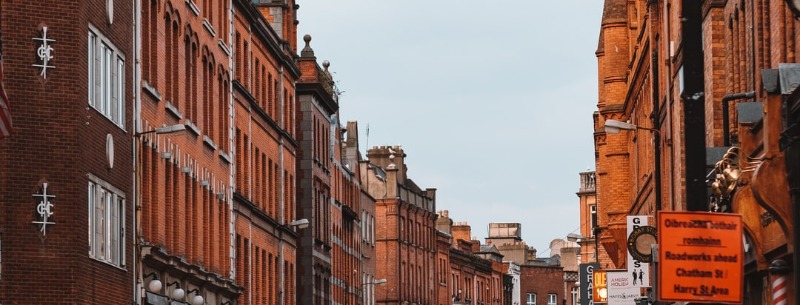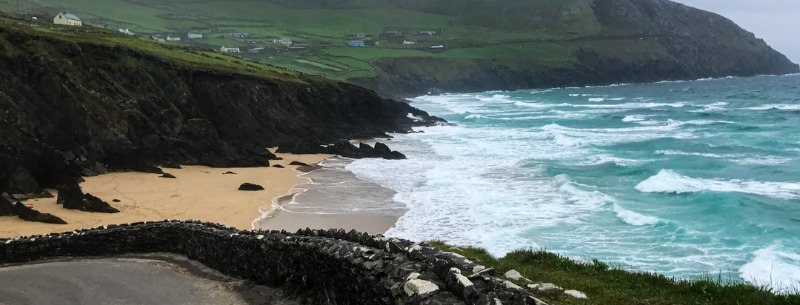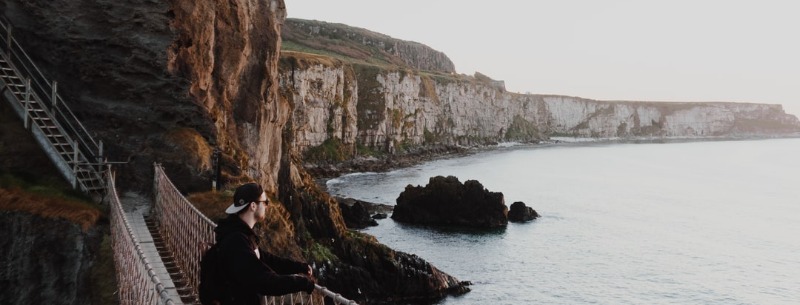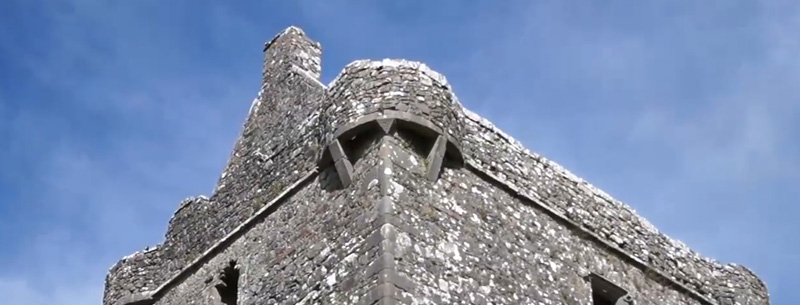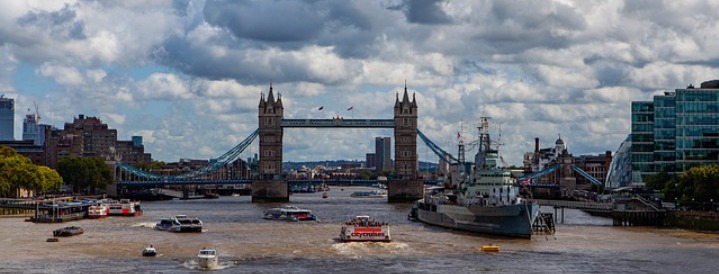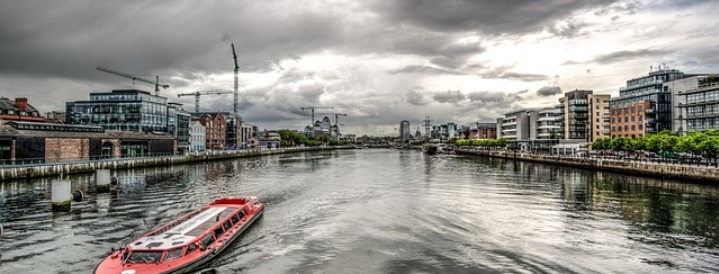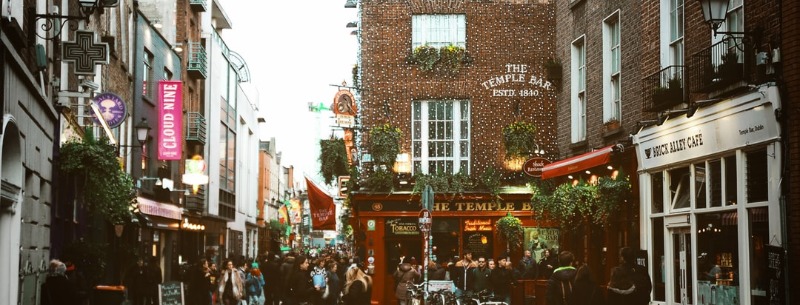2024 Ireland Visitors Guide
Landscape and people are what bring most visitors to Ireland – the Republic and the North. And once there, few are disappointed by the reality of the stock Irish images: the green, rain-hazed loughs and wild, bluff coastlines, the inspired talent for talk and conversation, the easy pace and rhythms of life. What is perhaps more of a surprise is how much variety this very small land packs into its countryside. The limestone terraces of the stark, eerie Burren seem separated from the fertile farmlands of Tipperary by hundreds rather than tens of miles, and the primitive beauty of the west coast, with its cliffs, coves, and strands, seems to belong in another country altogether from the rolling plains of the central cattle-rearing counties.
Vacations in Ireland
It’s a place to explore slowly, roaming through agricultural landscapes scattered with farmhouses, or along the endlessly indented coastline. Spectacular seascapes unfold from rocky headlands, and the crash of the sea against the cliffs and myriad islands is often the only sound. It is perfect if you want space to walk, bike, or (with a bit of bravado) swim; if you want to fish, sail, or spend a week on inland waterways. In town, too, the pleasures are unhurried: evenings over a Guinness or two in the snug of a pub, listening to the chat around a blood-orange turf fire.
But there is another Ireland growing at a phenomenal pace alongside all of this. The extraordinary economic boom enjoyed by the Republic since the early 1990s has brought growth on an unprecedented scale. A country notoriously blighted by emigration is, at last, drawing people home with the lure of work. The conspicuous new wealth of many makes itself felt in every quarter of Irish life, but most especially in cities like Dublin and Galway where a proliferation of new bars, cafés, and restaurants reveals a generation determined to enjoy life to the full. The cosmopolitan flavor of these cities is informed, in part, by the complex array of experiences brought home by returning ex-pats, more familiar with the ways of Melbourne and San Francisco, London and New York, than with those of the Aran Islands. The boom has its downsides – notably, spiraling property prices and the tensions brought about by increased immigration – but as a visitor, you’ll probably be most struck by the tremendous energy and palpable sense of confidence in the future, most especially in the young.
History
To act as a backdrop, there’s a wealth of history. In every part of the island are traces of a culture established long before the coming of Christianity: sites such as Newgrange in County Meath or the clifftop fortress of Dún Aengus on Inishmore (the biggest of the Aran Islands) are among the most stupendous Neolithic remains in Europe, while in some areas of Sligo, almost every hill is capped by an ancient cairn. In the depths of the so-called Dark Ages, the Christian communities of Ireland were great centers of learning, and the ruins of Clonmacnoise in County Offaly, the Rock of Cashel in Tipperary, and a score of other monasteries are evocative of a time when Ireland won its reputation as a land of saints and scholars. Fortifications raised by the chieftains of the Celtic clans and the Anglo-Norman barons bear witness to a period of later turbulence, while the Ascendancy of the Protestant settlers has left its mark in the form of vast mansions and estates.
Culture
But the richness of Irish culture is not a matter of monuments. Especially in the Irish-speaking Gaeltacht areas, you’ll be aware of the strength and continuity of the island’s oral and musical traditions. Myth-making is for the Irish people their most ancient and fascinating entertainment. The ancient classics are full of extraordinary stories – Cúchulainn the unbeatable hero in war, Medb the insatiable heroine in bed, or Fionn Mac Cumhaill (Finn Mac Cool) chasing Diarmuid and Gráinne up and down the country – and tall tales, superstition-stirring and “mouthing off” (boasting) play as large a part in day-to-day life as they did in the era of the Táin Bó Cuailngè, Europe’s oldest vernacular epic. As a guileless foreigner enquiring about anything from a beautiful lake to a pound of butter, you’re ideally placed to trigger the most colorful responses. And the speech of the country – molded by the rhythms of the ancient tongue – has fired such twentieth-century greats as Yeats, Joyce, and Beckett.
Music has always been at the center of Irish community life. You’ll find traditional music sessions all around the touristed coasts and in the cities, too – some of it might be of dubious pedigree, but the Gaeltacht areas and others can be counted on to provide authentic renditions. Side by side with the traditional circuit is a strong rock scene, that has spawned Van Morrison, U2, Sinéad O’Connor, and more recently The Divine Comedy and Jack Lukeman. And ever-present is the balladeers, fathoming and feeding the old Irish dreams of courting, emigrating, and striking it lucky; there’s hardly a dry eye in the house when the guitars are packed away.
Rivers & Lakes
The lakes and rivers of Ireland make it an angler’s dream, but the sports that raise the greatest enthusiasm amongst the Irish themselves are speedier and more dangerous. Horse racing in Ireland has none of the socially divisive connotations present on the other side of the Irish Sea, and the country has bred some of the world’s finest thoroughbreds. While association football is as popular as in most parts of the world now, Gaelic football, sharing elements of soccer and rugby (which itself has its hotbeds, notably in Limerick), still commands a large following. Hurling, the oldest team game played in Ireland, requires the most delicate of ball skills and the sturdiest of bones.
No introduction can cope fully with the complexities of Ireland’s politics, especially the dramatic changes in Northern Ireland in recent years. However, throughout the guide, we have addressed the issues wherever they arise and included pieces that give a general overview of the current situation. Suffice it to say that, just about everywhere hospitality is as warm as the brochures say, on both sides of the border.
When to go to Ireland
Ireland’s climate, determined by the pressure systems of the Atlantic, is notoriously variable, and cannot be relied upon at any time of the year. Each year produces weeks of beautiful weather – the problem lies in predicting when they are likely to arrive. In recent years late spring and early autumn have seen some of the best of the weather, with May and September as the most pleasant months.
Geographically, the southeast is the driest and sunniest part of the country, and the northwest is the wettest. But regional variations are not particularly pronounced, the overall climate is characterized by its mildness – the country benefiting from the warming effects of the Gulf Stream. Even in the wetter zones, mornings of rain are frequently followed by afternoons of blue sky and sun – and besides, a downpour on a windswept headland can be exhilarating, and provides as good a pretext as any for repairs to the local pub, the hub of Irish social activity.
Getting to Ireland
Travel between major centers in the Republic is generally straightforward, with reliable – albeit infrequent and slow – public transport operated by the state-supported train and bus companies Iarnród Éireann (Irish Rail) and Bus Éireann. There are, however, glaring anomalies, and you should never assume that two major, local towns are necessarily going to be connected. It pays to think and plan ahead. Once off the main routes, this becomes particularly important since it’s quite usual for small towns and villages to be served by a couple of buses a week and no more. Transport in the North is similarly infrequent in rural areas. Ulsterbus is generally regular and dependable, as is the (limited) train network. Ireland’s relatively quiet rural roads make car rental an attractive and increasingly popular option, allowing you to visit the more remote areas of the country; most towns throughout Ireland will have rental outlets, though the best value is usually found in Dublin. Parts of the country, especially in the west, are ideal for cycling and bikes are available for rent in even the smallest villages.
- Trains: In the Republic, Irish Rail (Iarnród Éireann tel 01/836 6222) operates trains to many major cities and towns en route; on direct lines, it’s by far the fastest way of covering long distances.
- Buses: Bus Éireann (tel 836 6111) operates throughout the Republic, and its services are reliable, if infrequent. It’s possible to travel by bus between all major towns, but routings can be complex, involving several connections.
- Driving: In order to drive in Ireland, you must have a current driving license; a license from any EU country is equivalent to an Irish one. Licenses from non-EU countries are valid for one year after entry into the country.
- Hitching: In the Republic hitching is commonplace; for locals, it’s almost as much a normal part of getting around as using the bus and train networks, and for the visitor, the human contact makes it one of the best ways to get to know the country.
- Cycling: If you are lucky enough to get decent weather, cycling is one of the most enjoyable ways to see Ireland, ensuring you’re continually in touch with the landscape. Roads are generally empty, though very poor surfaces may well slow you down.
Festivals & Entertainment in Ireland
Virtually every village and town in Ireland seems to have a festival of some kind or other each year. Whatever the pretext for the celebration, it’s usually also an excuse for serious partying. Well-established ones like the Cork Jazz Festival and the Wexford Opera Festival are major international events, and getting tickets for top performances can be well nigh impossible without advance planning. The very word “festival” seems to act as a magnet for all sorts of musicians, and many events are wonderfully overwhelming. No matter the size of the town, there’s barely enough room for all that’s happening, with music and dancing bursting out of the official venues into surrounding streets and bars. The biggest of the annual events are listed here, but pick up a calendar of events at any major tourist office and you’ll soon get a picture of the huge range of celebrations.
Belfast Travel Guide
BELFAST is the capital of Northern Ireland and its largest city in some way. More than a third of the province’s population live within the Belfast conurbation and, consequently, there’s a pace and bustle about the place that you’ll find almost nowhere else in Northern Ireland. In appearance it closely resembles Liverpool, Glasgow, or any other industrial port across the water, and, similarly, its largely defunct docklands – in which, famously, the Titanic was built – are undergoing massive redevelopment. Though the city center is still characterized by numerous elegant Victorian buildings, there’s been an enormous transformation here, too, and the streets leading northwards from the hub of Belfast life, Donegall Square, is packed with chain stores and new shopping precincts. Yet it is not simply the city’s appearance that is changing.
Nowhere is the optimism engendered by the peace process more obvious than Belfast at night. Most evenings, the city’s bars, clubs, and restaurants, especially around the Golden Mile, are crammed to overflowing and new venues seem to spring up almost daily. It’s almost as though a generation deprived of nightlife by the Troubles has decided to stage a permanent party while it has the chance. Belfast is thriving culturally too: as the tension diminishes, visiting artists and performers are returning in large numbers and there’s been a significant resurgence of homegrown talent. Music, theatre and the visual arts are all flourishing, and traditional Irish culture is the subject of rapid rediscovery. Belfast is a place for getting out and about and has plenty to experience.
This need not take more than a couple of days in the city itself, although Belfast is a good base from which to visit virtually anywhere else in the North. In the center, concentrate on the glories that the Industrial Revolution brought: grandiose architecture and magnificent Victorian pubs. To the south are the lively and influential Queen’s University and the extensive collections of the Ulster Museum, set in the grounds of the Botanic Gardens. A climb up Cave Hill, to the north, rewards you with marvelous views of the city spread out around the curve of the natural harbor, Belfast Lough. Security measures in the city have been considerably relaxed and many of the barriers and controls have been removed. However, the iron blockade known as the Peace Line still bisects the Catholic and Protestant communities of West Belfast, a grim physical reminder of the city’s and country’s sectarian divisions.
Dublin Travel Guide
Dubliners are fiercely proud of their city, and while DUBLIN is the Republic of Ireland’s capital it is quite apart from and can be dismissive of, the rest of the country – one Dublin wag once remarked with characteristic caustic humor that “the only culture outside Dublin is agriculture”. Over the past decade, as young people from rural Ireland and all over Europe, gravitate toward the city to share in the wealth, not experienced since Dublin’s much-celebrated Georgian heyday, this urban/rural divide has started to wane. As a result, Dublin exudes the style and confidence of any cosmopolitan European capital – most apparent at night when Dublin parties with a panache verging on the reckless.
Galway City Travel Guide
The city of GALWAY, the folk capital of the West, has a vibrancy and hedonism that make it unique. People come here with energies primed for enjoyment – the music, the drink, the “crack” – and it can be a difficult place to leave. University College Galway guarantees a high proportion of young people in term time, maintained in summer by the attractions of the city’s festivals. This youthful energy is an important part of Galway’s identity, and the city’s mix of culture and fun attracts not only disaffected bohemians from other areas of Ireland but folksy young Europeans who return each year with almost religious devotion. Galway sees itself in many ways as the capital of Gaelic Ireland, where traditional aspects of Irish society, primarily music and language, are most confidently and colorfully expressed.
As is the case with many other Irish cities, Galway has, for the past decade, been experiencing a surge of economic growth. Constant renovation is in progress in the small and crowded city center, and during the summer it has the energy of a boomtown, with an expanding number of shops and restaurants to cater to the increase in visitors and students. The downside of this is the huge amount of property development galloping ahead in the city center, threatening to take away some of the city’s unique character, though, for the time being at least, Galway retains its human scale.
Prosperity allows vigorous independence from Dublin, mirrored in the artistic dynamism of the city. It’s a focus on the traditional music of Galway and Clare – Galway’s status as an old fishing town on the mythical west coast adds a certain potency – and there’s a strong interest in drama. This renewed sense of civic and artistic optimism is reflected not only in conventional arts but also in the vibrant street theatre that has become the hallmark of the city. At no time is the dynamism of Galway more evident than during its festivals, especially the Galway Arts Festival (tel 091/583800) during the last two weeks in July, when practitioners of theatre, music, poetry, and the visual arts create a rich cultural jamboree. In April the city hosts a festival specifically devoted to poetry itself, the Cúirt Poetry Festival (tel 091/565886), in June it’s film buffs who invade the city for the Film Fleadh (tel 091/751655), while the king of all Galway festivals, the riotous Galway Races usually takes place during the first week in August. At the end of September, the Galway Oyster Festival (tel 091/527282) completes the annual round. If visiting the city at any of these times be warned that accommodation will be at a premium, and you’ll need to book well in advance.
Castle Blarney, Iconic Castle in Ireland
Castle Blarney is considered by most people the iconic image of Ireland. Situated in Country Cork, this castle started to be recognized all over the world. If you are fascinated by history and mostly by castles, then Castle Blarney is a must-visit place. This castle is a very popular place for tourists who come to Ireland, over a million visitors from all over the world, every year.

There are many legends about this castle, but there is one commonly accepted story. It says that back in 1314 at the battle of Bannockburn, in recognition of the Irish, Robert the Bruce gave a part of the stone to the King of Munster, Cormac McCarthy. Then, the Castle Blarney was named the Blarney Stone. Later, in 1446, King Dermot McCarthy placed the stone in an enlarged castle he constructed.
Kissing the Blarney Stone became a tradition. A lot of people, tourists, even famous writers, actors, and government leaders came to Blarney Castle planning to kiss the famous stone. The tricky part is that kissing the Blarney Stone is not like a walk in the park; you just go there and kiss it. The stone is situated on the highest place of the castle and by kissing it you must lean back over the edge to get close enough to it. This tradition doesn’t have an exact date, but it is said to be around the 18th century.
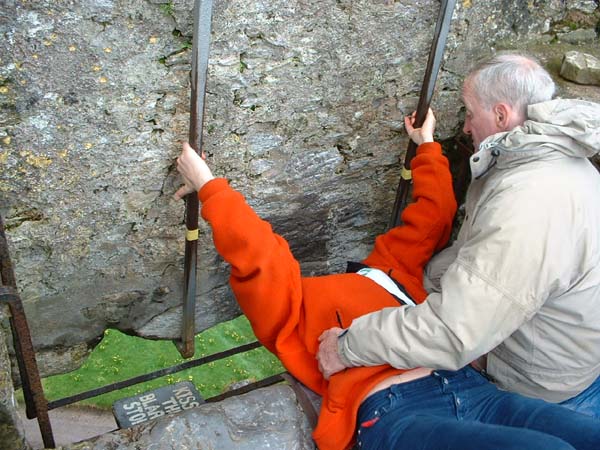
Legends say that every man or woman who kisses the stone will be into great wealth and will be famous, or find the love of their lives. Probably that makes the Blarney Stone so famous and every visitor wants to kiss it.
So if you are planning a visit to Ireland, don’t hesitate to take a tour of the Castle Blarney. Maybe, if you are not afraid of heights, you will kiss the Blarney Stone, and who knows, you will become famous or you will find your true love. What castles did you visit lately and what stories or legends did you hear about it?
